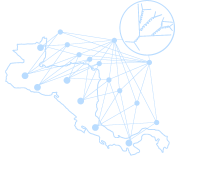Speaker
Description
The main objective behind the MATHUSLA proposal is to build a large area hodoscope detector at ground level, close to the interaction point of the CMS detector, to look for the decay signals of neutral long lived particles (LLP) at the next HL-LHC runs in an environment with low background. LLPs are expected in the context of Beyond Standard Models, which try to solve open problems in fundamental particle physics. The idea behind MATHUSLA is to monitor a large volume of air (100 m x 100 m x 25 m) with a series of layers of tracking detectors to look for displayed vertices produced by the LLPs. The updated MATHUSLA design considers extruded scintillators for the tracking detectors. However, it has been also considered to add an extra layer of RPCs to enhance the extensive air shower detection capabilities of MATHUSLA to carry out cosmic ray studies in the 100 TeV - 100 PeV regime. In this talk, a brief introduction to MATHUSLA will be presented, with an emphasis on its sensitivity to cosmic ray detection. A comparison of its performance with that of other present and future cosmic ray facilities working in the same energy range as MATHUSLA will also be shown.

